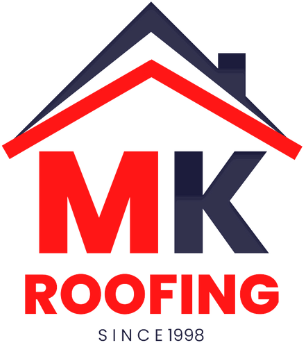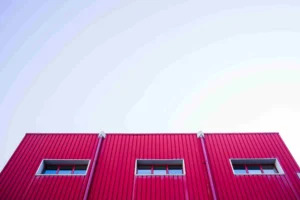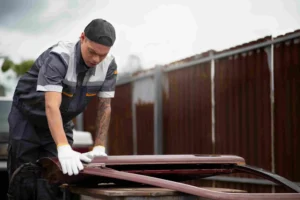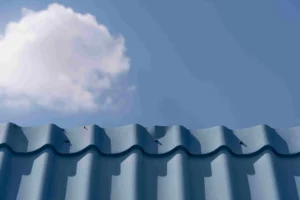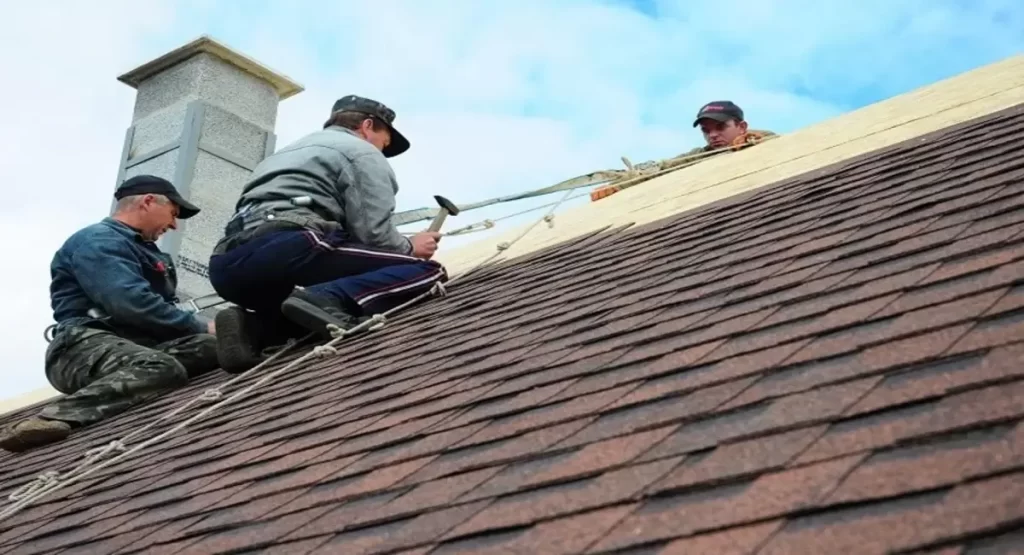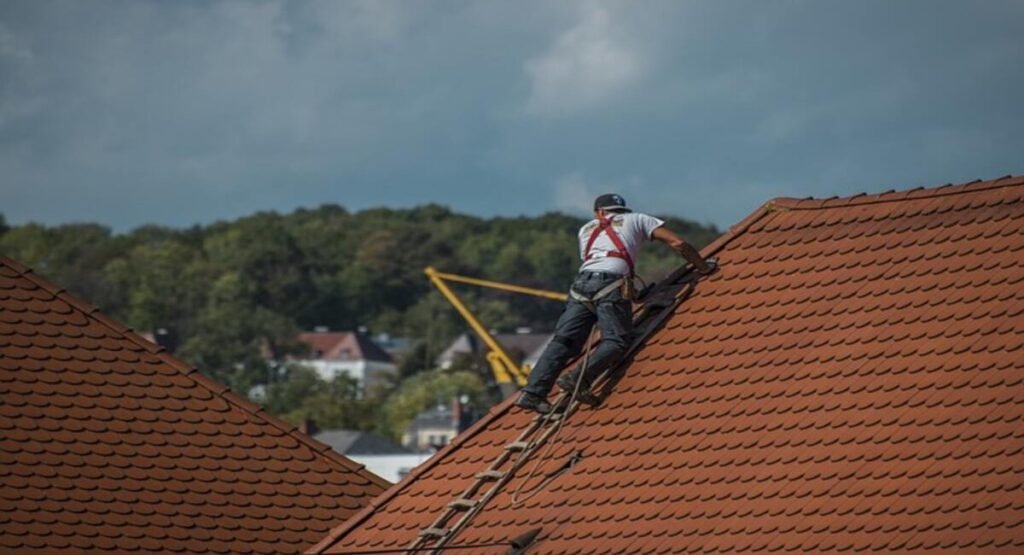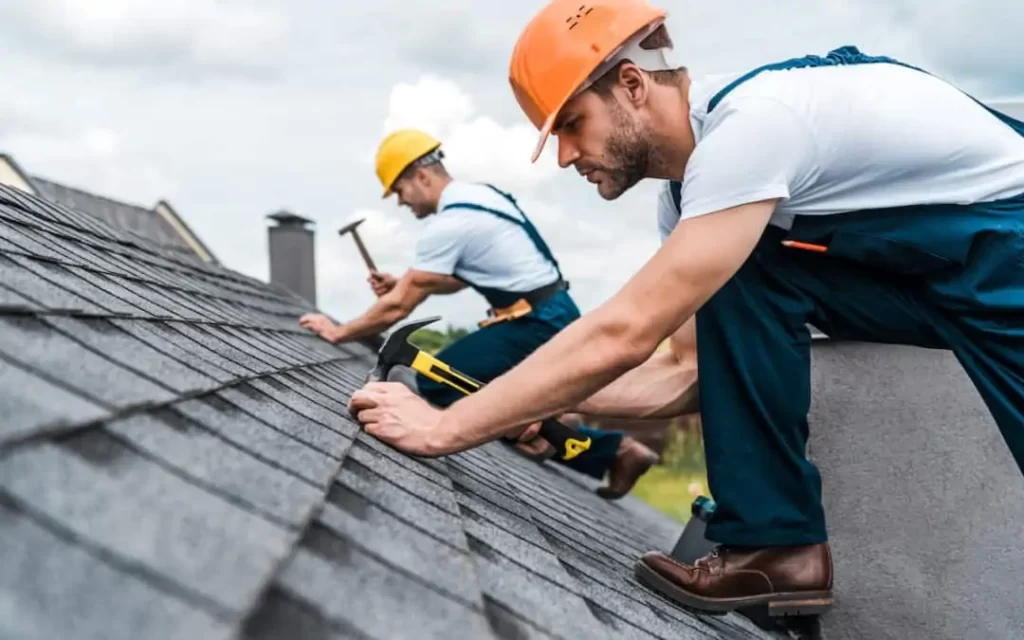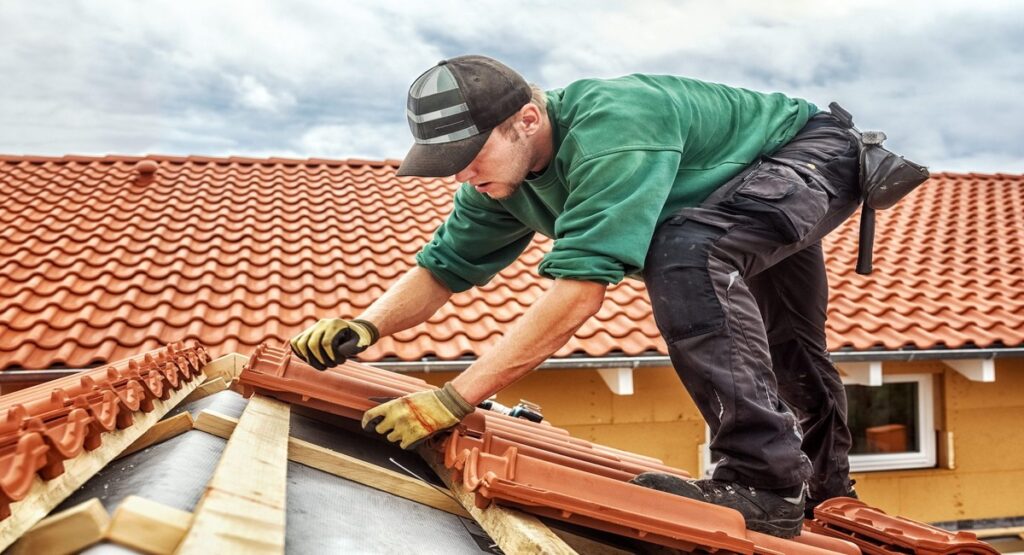The roofing market related to rain and waterproofing in 2025 is a significant and growing segment of the broader roofing .Protecting our homes or working areas is one of the best things we can do besides maintaining the roof, which not only saves money from water damage, but it also saves money from unnecessary expenses that will be there when the roof is damaged. But what if the weather doesn’t cooperate?Rainy weather can be a nightmare for both roofers and homeowners. So you may still be able to accomplish some tasks, but others need to be postponed for the sake of safety or efficiency.
This guide will explain everything you need to know about roofing in the rain, including theKet factors to consider while in rain ,risks, solutions, and professional advice.
Key Factors to Consider While Roofing in Rain
Safety of Workers
Wet steam and wet surfaces make slipping and falling more likely. You do need to have the proper harnesses, shoes, and safety precautions.
Material Performance
Wet surfaces necessarily don’t hold shingles, adhesives, or underlayment, causing long-term roof headaches.
Structural Exposure
If you have a roof with a deck that is exposed to the rain, you can avoid wood rot, mold, and interior damage from water penetration.
Quality of Installation
Roofing in the rain generally results in poor quality because wet roofing shingles cannot be installed appropriately.
Temporary Protection
Urgent measures, thick tarps, and plastic sheeting may be necessary to shield any exposed areas until work can safely resume.
Project Delays and Costs
Rain can delay project timelines, but rushing work in dangerous conditions usually costs more in the long run.
Types of Roofing and How They Respond to Rain
Various types of roofing material respond to rainfall differently. Knowing how your roof reacts to moisture can tell a lot about what risks there may be to working in the rain.
Asphalt Shingles
Wet asphalt shingles easily become slippery and unsafe for roofers. Further, the adhesives might fail to adhere in the rain, which can affect the integrity of the roof.
Metal Roofing
Although metal roofing is already water-resistant, it becomes an incredibly smooth surface when wet from rain. Walking on a wet metal roof without safety measures is risky. Rain also magnifies the noise when being installed.
Tile Roofs (Clay or Concrete)
Tiles are water-resistant themselves, but a downpour can be a slip hazard and can crack tiles during installation. Wet mortar is also weaker, and this might lead to poor adhesion.
Flat Roofs (TPO, EPDM, PVC)
Flat roofing membranes like TPO and EPDM are weak to water intrusion if seams aren’t sealed correctly. Rainwater can pool, preventing proper adhesion and making installation nearly impossible until conditions dry out..
Roof Replacement During Rain
Replacing a roof is one of the most significant home improvement projects, and there must be dry, stable weather for it to last. Building replacement on live tracks during rain is not an easy task and should be ignored at your own risk. Wet surfaces and the risk of falls. Safety is a top- issue ; a wet surface adds an awful lot of risk for a fall to roofing work, and roofing as an occupation is already pretty high-risk, with a lot of slips and falls. In addition to safety, roofing performance suffers in the rain. Shingles, adhesives, and underlayment need a dry surface to grab, and by installing those products on wet decking, they will likely fail in the future, wasting time and money for your customers. There’s also a structural risk in opening the roof deck with rain; this can result in water intrusion, as well as rot and mold in the wood framing of your residence. For this reason, roofing professionals advise against replacing a roof when there is rain in the forecast. But when those storms strike in the middle of the work in progress, MK Best Roofing automatically jumps into high gear to shield your home with strong tarps and heavy coverings that protect against leaks and interior damage until the weather clears and the project resumes safely.
Specific Rain-Related Roofing Challenges
Noise on Metal Roofs
Rain on metal roofs produces loud, clanging sounds. Though not a performance problem, some homeowners look into soundproofing options like insulation or underlayment enhancements.
Managing Roof Leaks in Rain
- Leaks found during rainstorms need to be addressed swiftly. MK Best Roofing recommends:
- Using buckets to catch leaks to avoid damage inside the building.
- Damming with tarps or roof putty for emergency sealing.
- Hiring contractors for repairs as soon as weather permits.
Emergency Leak-Stopping Techniques
- Roofers should come out and can do temp fixes if raining:
- You are going to be tarping any exposed areas for water exclusion.
- Plastic Sheeting for huge portions of damaged roof.
- Base sealant for use in milder rainstorms.
- These are all temporary fixes; to make permanent repairs, the ground must be dry.
Roof Inspections in the Rain:
Rain can be helpful to roofing inspections.
Advantages:
- Inspectors can look for leaks in action, inspect flowing gutters, and look for the location of water pooling on flat roofs.
- Walking on wet roofs can be dangerous, and drone inspections or visual inspections from the ground may be better options.
- MK Best Roofing utilizes the latest technology , such as infrared, for identifying hidden moisture, allowing inspectors to work without risking their health in the rain.
Common Roofing Issues During Rain and Their Solutions
Roofs have a way of keeping their problems unseen until it rains.
Leaks: If you have loose or missing shingles, water leaks into your roof long before it becomes visible.
Clogged Gutters and Heavy rain: The heavy rain can reveal drainage problems, and the water backs up and damages fascia boards.
Flat Roofs Pooling: When water sits on your roof for an extended period, it will speed up the decay of the membrane and cause leaks to develop.
Detached or Deteriorated Flashing: Rain puts flashing around everything from chimneys to skylights and vents to the test.
Quick Fixes: Temporary tarps, sealants, and emergency patches can halt the flow of water until permanent repairs can be done.
Long-Term Solutions: Regular checks, gutter cleaning, and professional roof replacement/repairs when needed will go a long way toward more long-term peace of mind.
Conclusion:
Working on a roof in the rain is challenging in many ways, including concerns for your safety and your materials’ upkeep. Inspections and emergency patching of leaks can typically be dealt with regardless of the conditions, but full replacements or the installation of new products should wait for dry weather so you can preserve the longevity of the finished work.
At MK Best Roofing, we care about roof safety, longevity, and the investment of our customers. Our experienced storm damage team will use the latest tools and protocols, along with emergency solutions, to address your rain-related roofing needs respectfully.
The next time you see leaks, water puddling, or storm damage on a rainy day, call MK Best Roofing right away and get professional advice and outstanding service. We will rest easy knowing your home or place of work is protected, rain or shine.
